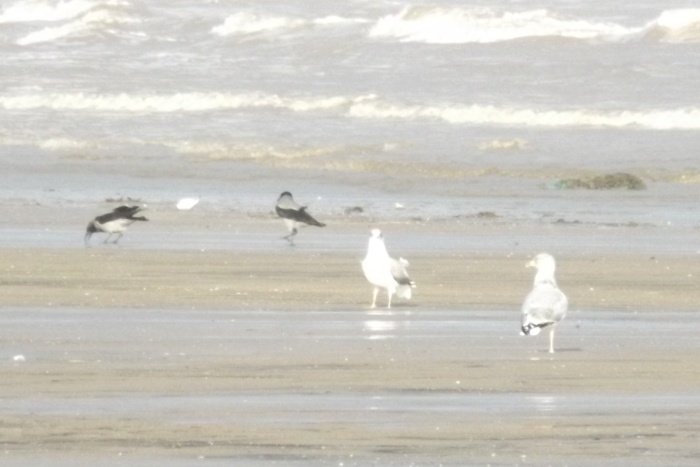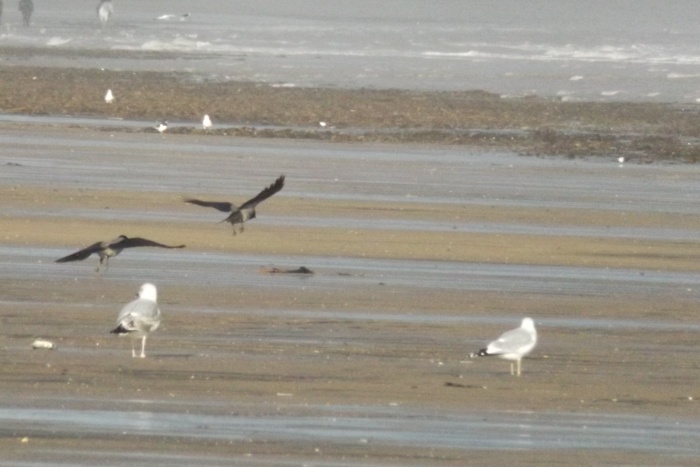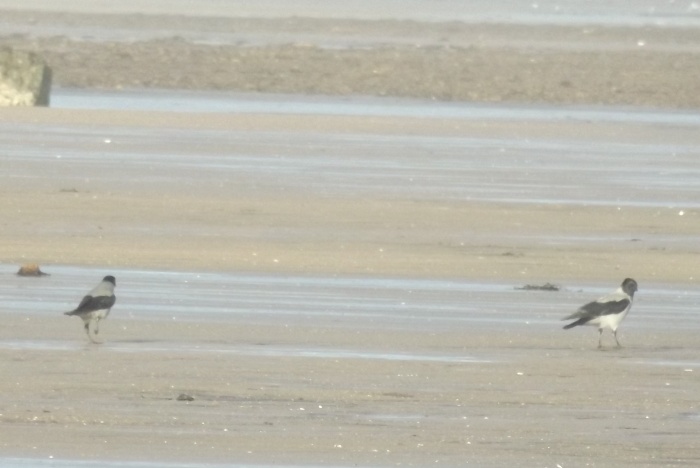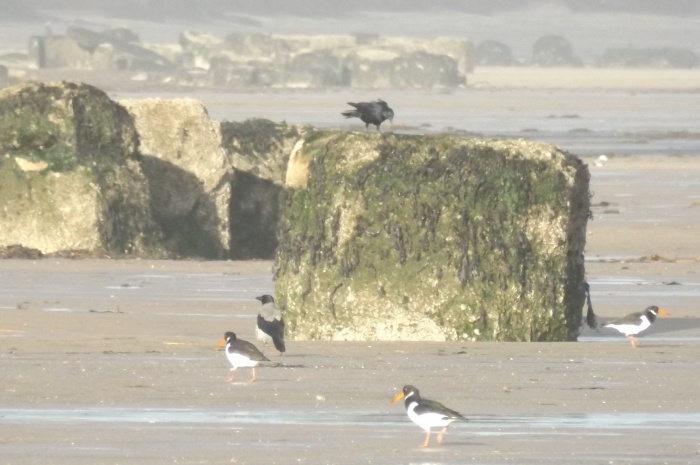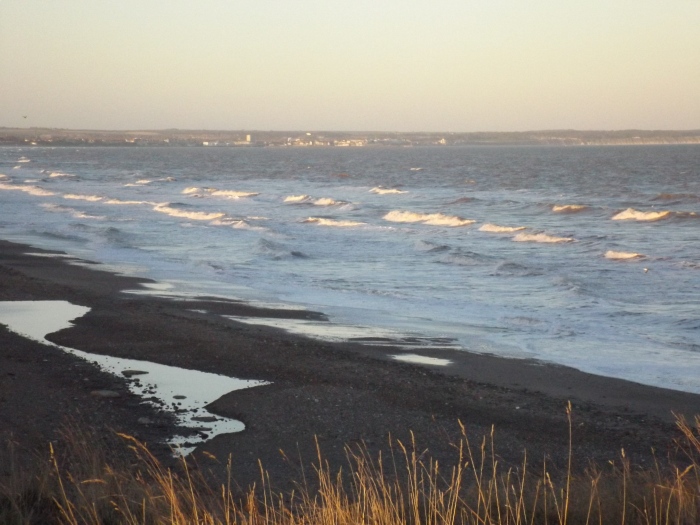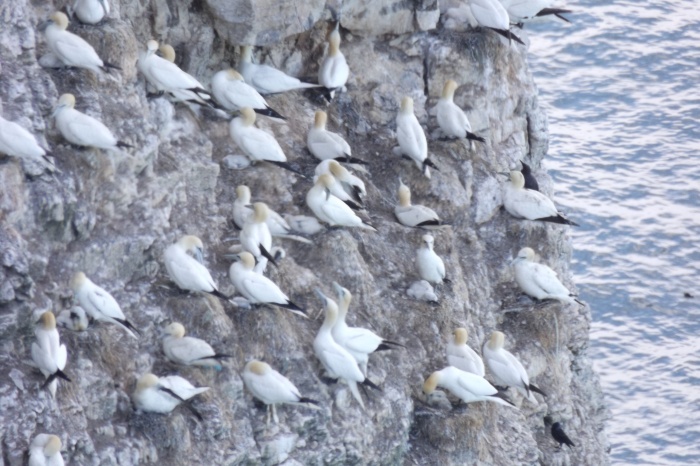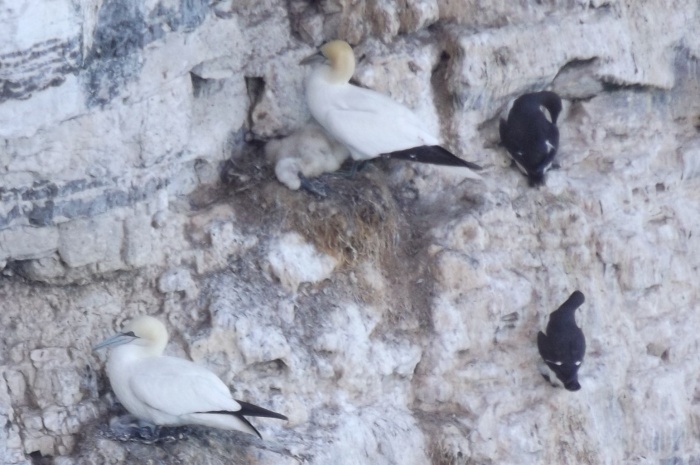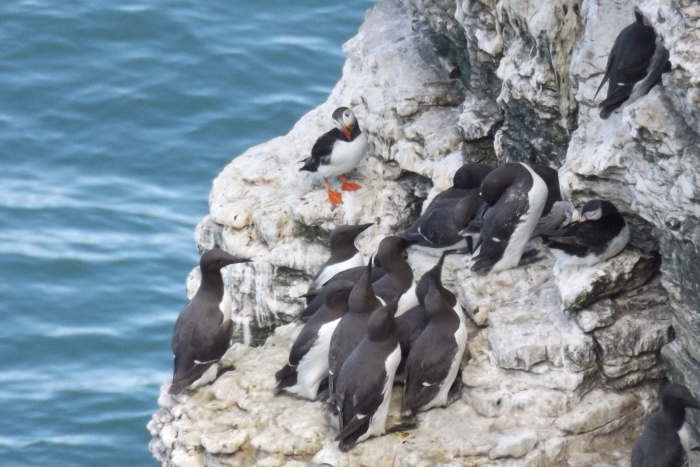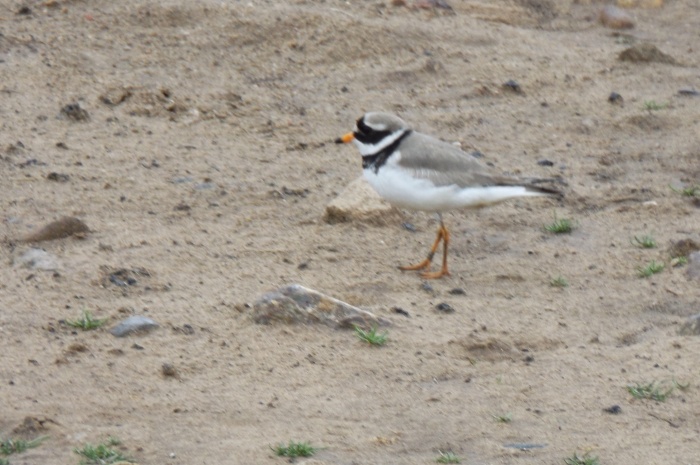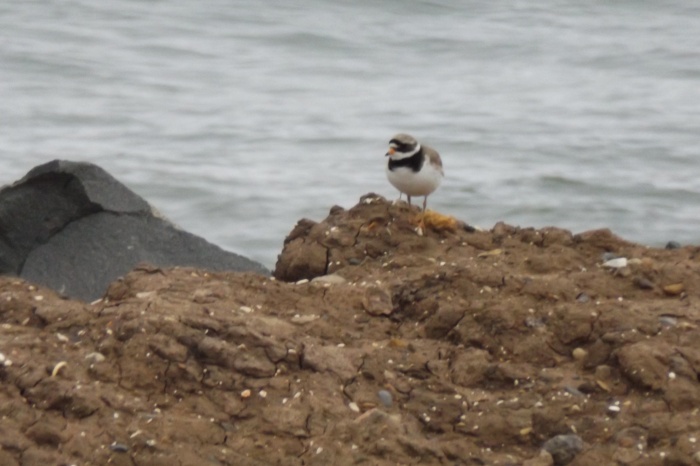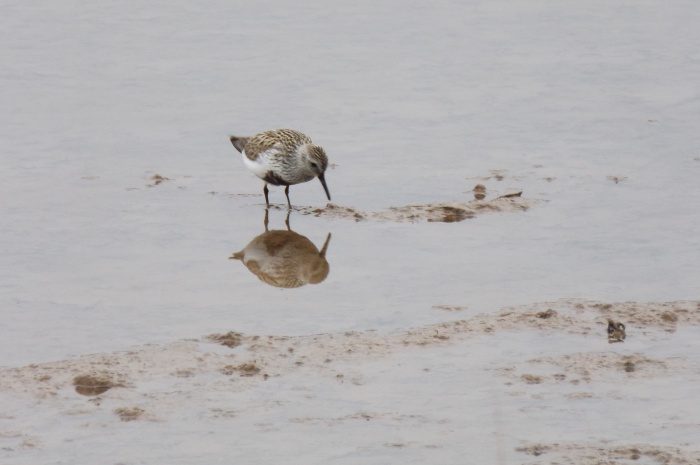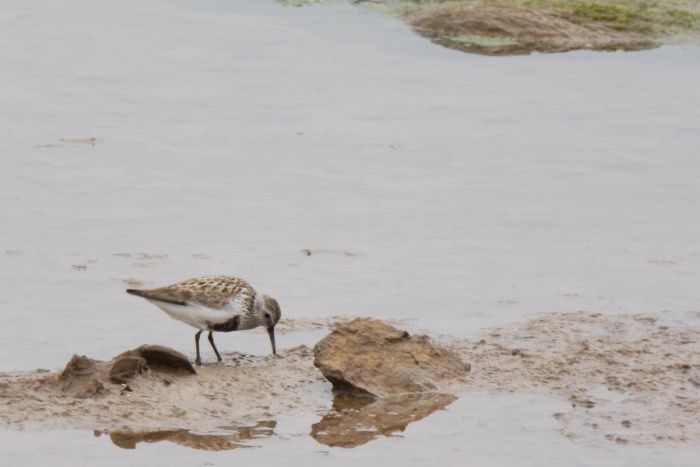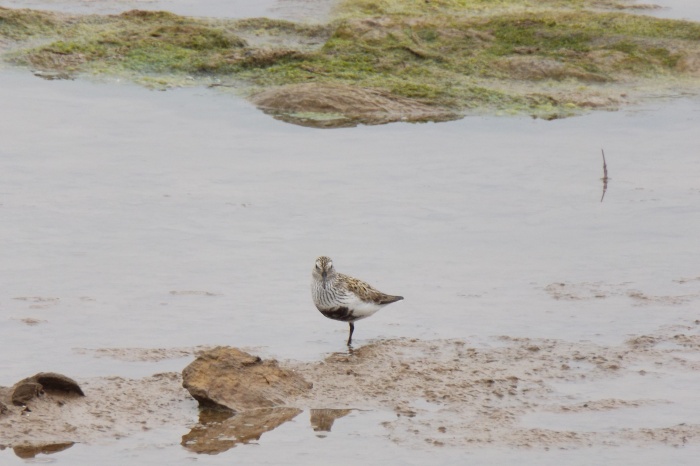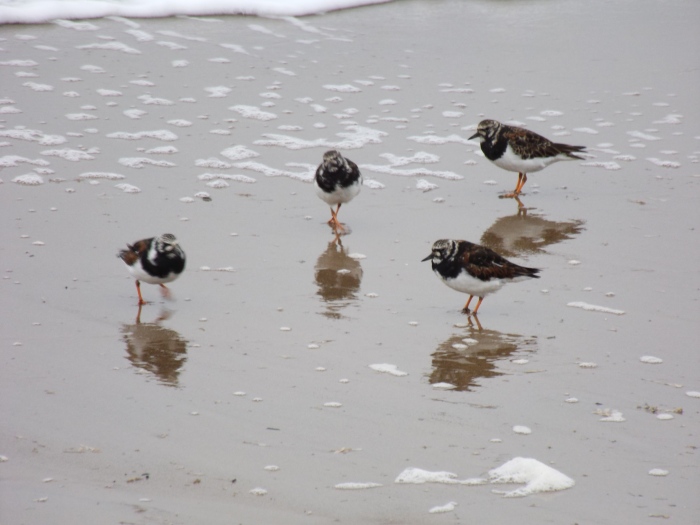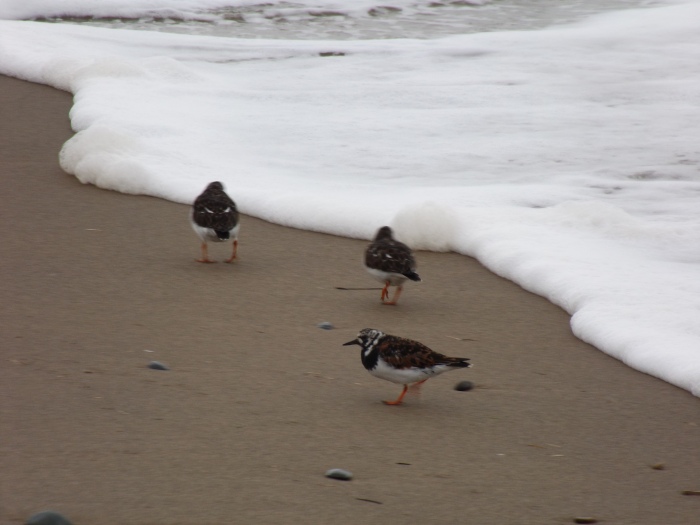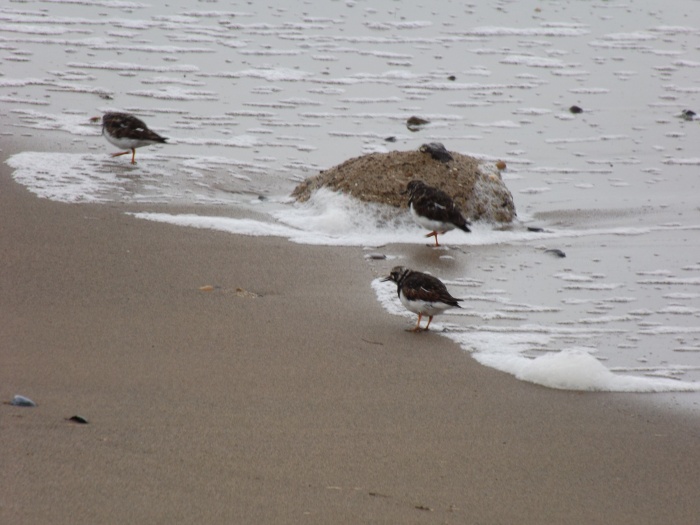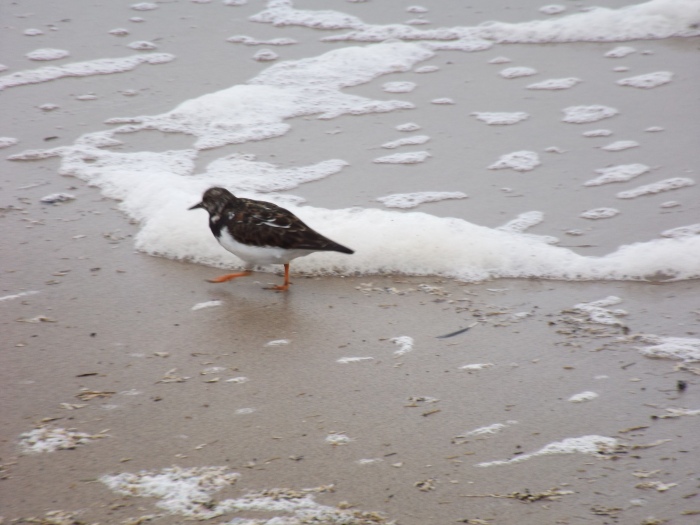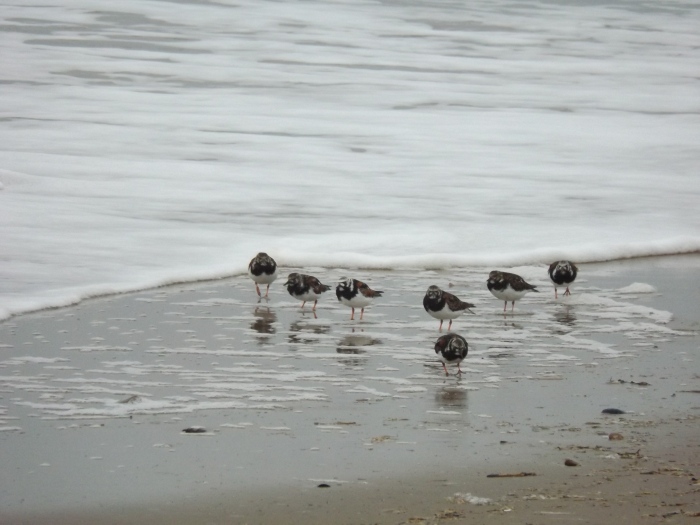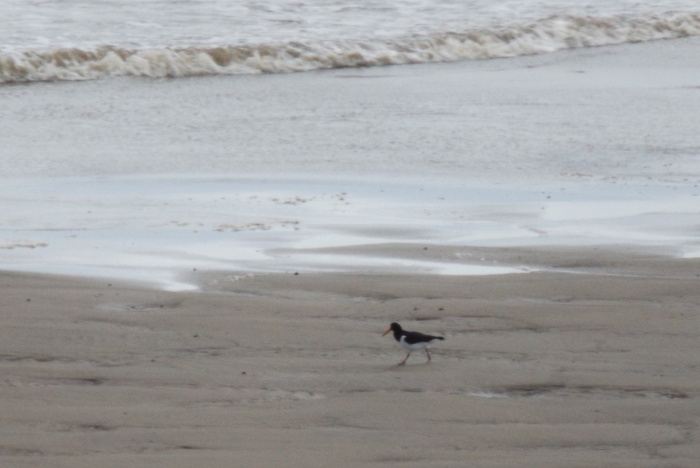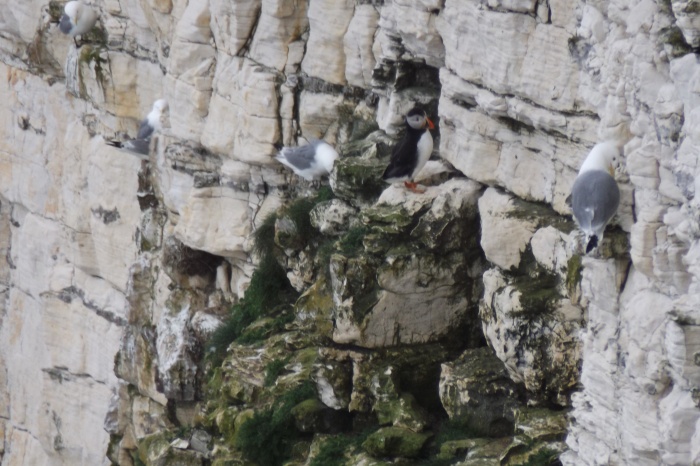
Puffin and kittiwakes, Bempton Cliffs
This past week we’ve been on holiday just outside Bridlington on the East Yorkshire coast, so we’re bringing lots of different birds we’ve seen around the coast and at the RSPB Bempton Cliffs reserve. If you’ve never been, it’s really worth visiting: you’ll experience the sights, sounds and smells (!) of nesting seabirds along the dramatic coastline.
Of course, the bird we really wanted to see was the puffin! Having visited in March last year and seeing quite a few of them on the cliffs, we were surprised that we only managed to spot a couple inland among the many gannets, guillemots, kittiwakes, razorbills and others. They were quite difficult to spot too, and the pictures are taken quite far from where they were on the cliffs.

Puffin, Bempton Cliffs
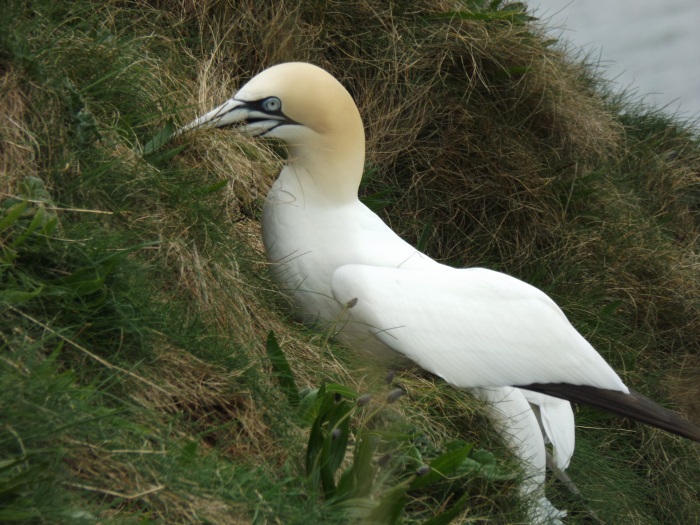
Gannet, Bempton Cliffs
The gannets kept us entertained with collecting nesting materials, fighting and getting friendly with each other. Apparently some of the pairs had already laid eggs, although we didn’t get a glimpse.

Gannets, Bempton Cliffs
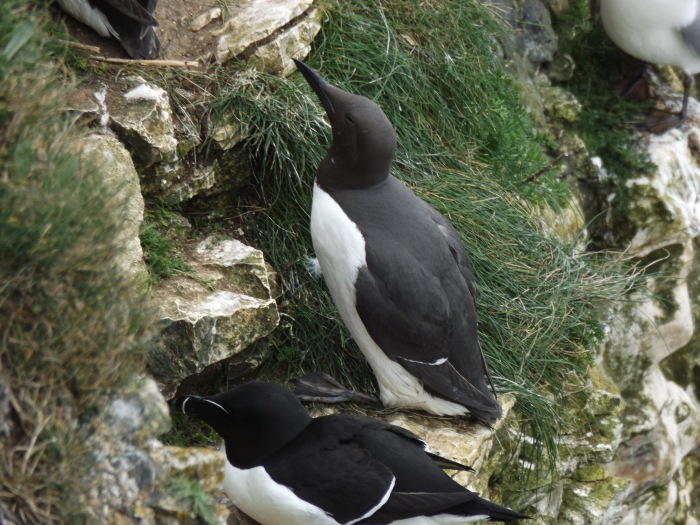
Guillemot and razorbill (below), Bempton Cliffs
This picture shows the guillemot and razorbill next to each other. As you can see, the razorbill has a bill like a knife, hence its name. They lay eggs which pivot so they don’t roll off the cliffs, where they’re very precariously balanced.
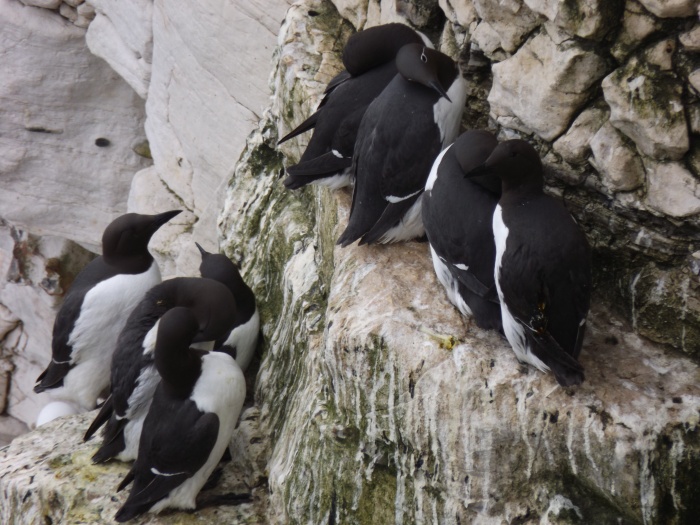
Guillemots, Bempton Cliffs
Occasionally a guillemot will show a white ‘spectacle’ round its eye: this is a bridled guillemot, which you can see in the above picture, on the second guillemot from the left on the upper ledge.

Razorbill, Bempton Cliffs
Other birds we saw were the kittiwakes, which are a type of gull with a yellow bill, sadly in decline recently.
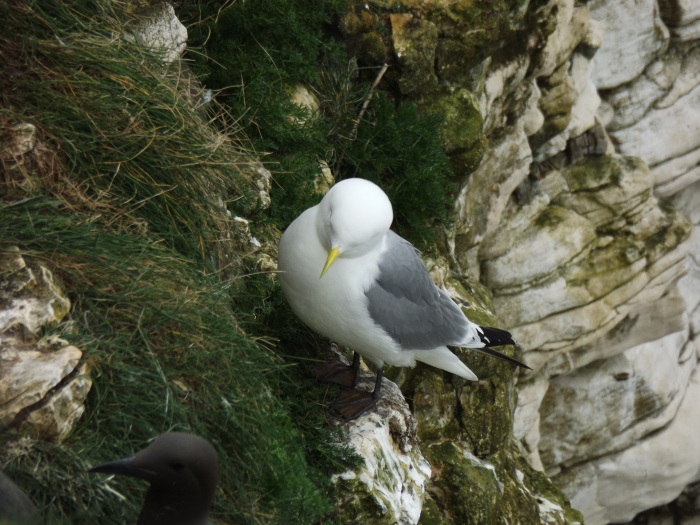
Kittiwake, Bempton Cliffs
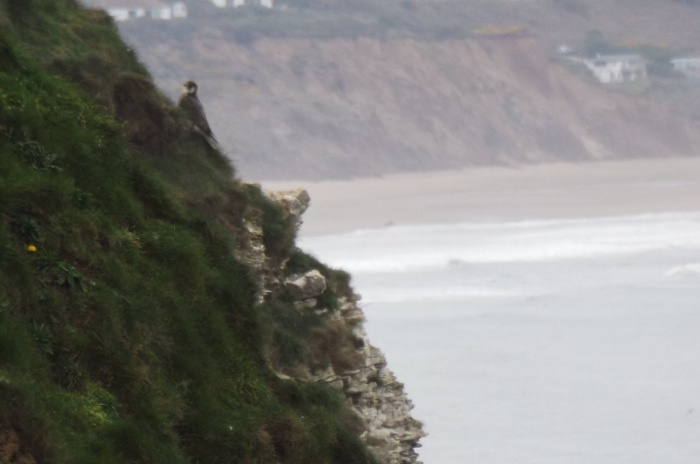
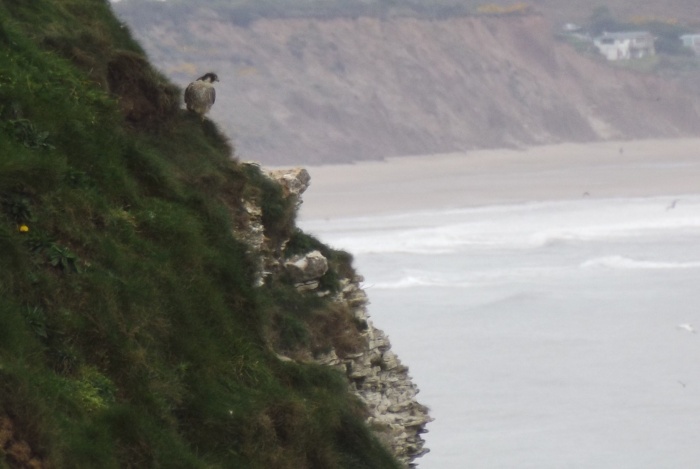
Peregrine falcon, Bempton Cliffs
As we scoured the cliff edges, we spotted a peregrine falcon sitting on the grass by the cliff edge. Our fastest bird of prey, they are very impressive, and we were very pleased to spot one on the horizon, although it was quite far away.
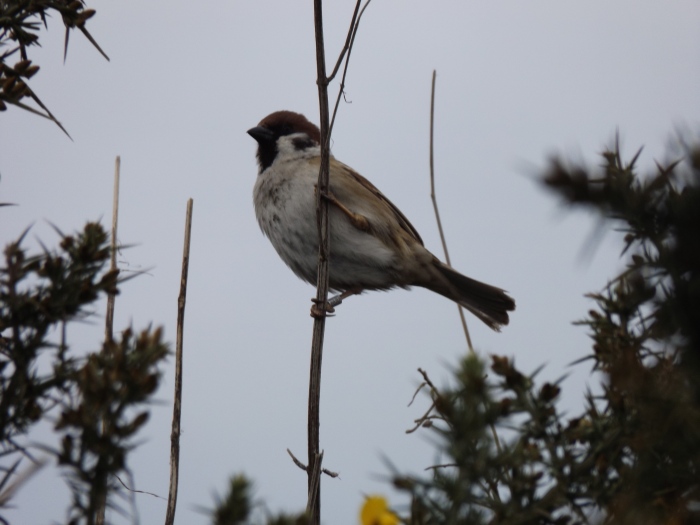
Tree sparrow, Bempton
Back near to the visitor centre, there were many tree sparrows taking advantage of the food in the feeders. Quite different from their cousins the house sparrow, their delightful chattering and pretty brown caps kept us amused for ages. There was also a couple of large brown rats picking up the food from the ground!
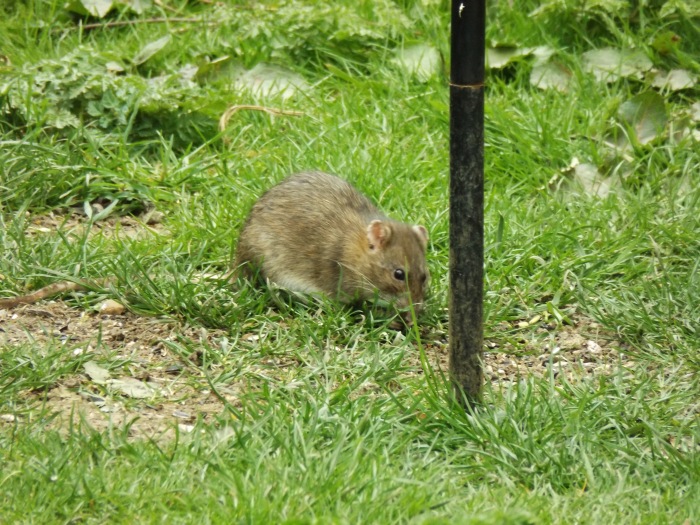
Rat, Bempton
Our visit to Bempton was definitely worthwhile, and it would be interesting to return later in the year when the young have hatched.
We stayed at Barmston beach, close to Bridlington, and were delighted to share the beach with a colony of sand martins, literally flying over our heads, nesting in the cliffs on the beach.

Sand martin, Barmston beach
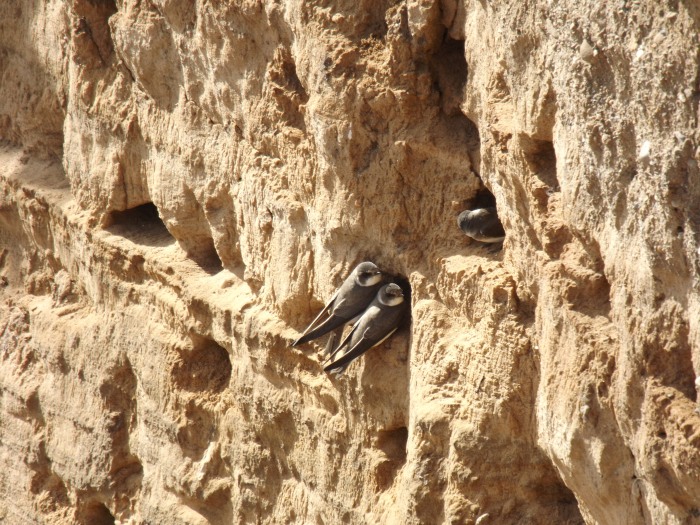
Sand martins, Barmston Beach
The fields alongside the beach were full of skylarks and meadow pipits, flying up into the sky and descending back to the grassy ground.
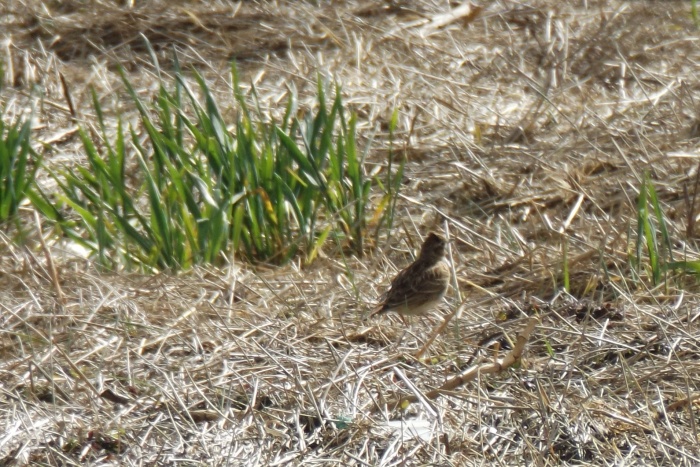
Skylark, Barmston

Meadow pipit, Barmston
The coastal birds were really a delight, and we were quite sad to leave. On our last day we decided to head west before going home to make the most of our holiday, and visited Knaresborough and Ilkley Moor.

Dipper, Knaresborough
We managed to spot a dipper bobbing up and down in the River Nidd in Knaresborough, from the castle grounds high above. You might just make out a white bib on the edge of the stones – this was as close as we could get to this fast moving bird! It’s an amazing bird, feeding under water in fast flowing rivers and streams.
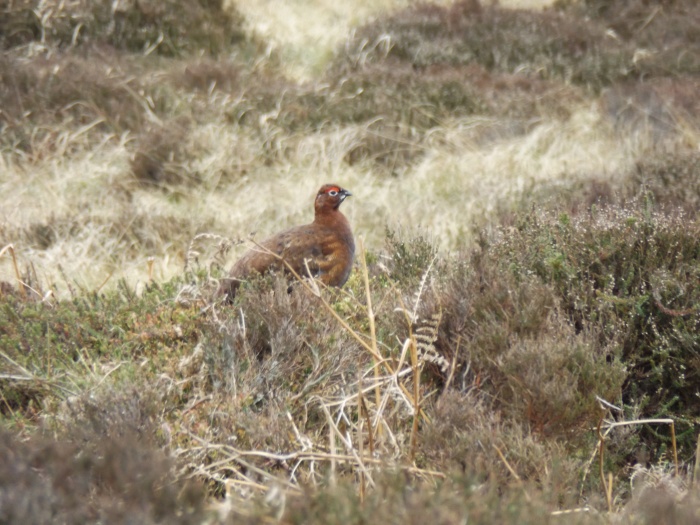
Red grouse, Ilkley Moor
Ilkley brought us our first sightings of red grouse – there were quite a few of them in the heathland, making their presence felt flying around noisily! We also heard and saw a curlew flying overhead, but didn’t get a picture of this one.
Lee found a stonechat, again a first, but it didn’t stick around very long so we didn’t get a very good picture.
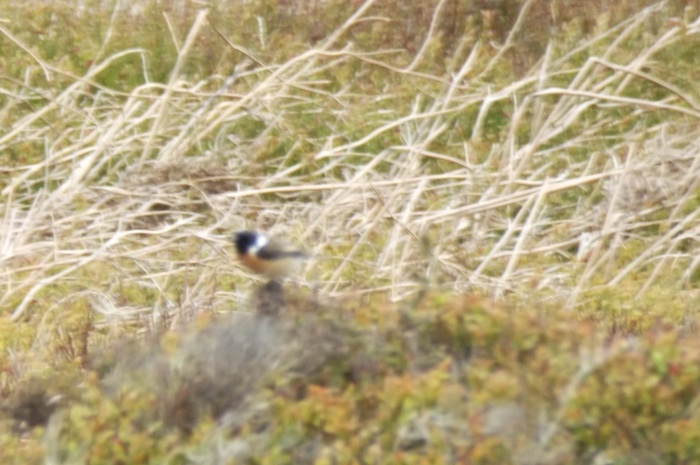
Stonechat, Ilkley Moor
All in all we had a fantastic time and saw some amazing birds. Oh we do like to be beside the seaside!

Sand martins, Barmston
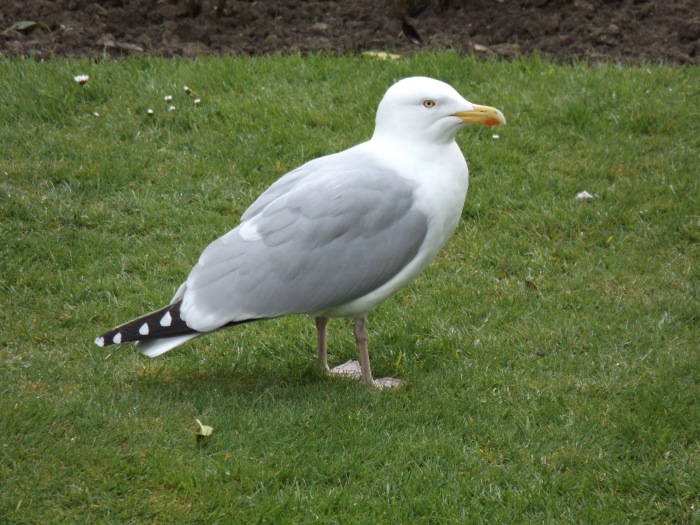
Herring gull, Bridlington

